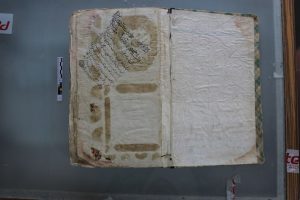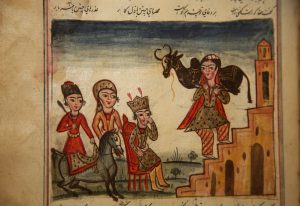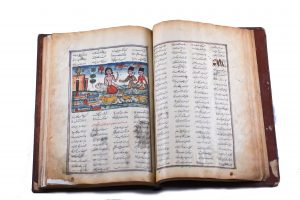Papermaking
Over a long period of time, Iranian used parchment and skins of animals for writing. The word parchment evolved (via the Latin pergamenum and the French parchemin) from the name of the city of Pergamon, which was a thriving center of parchment production during the Hellenistic period. Making use of parchment was common even before the Achaemenides era. Darrius the Great has referred to using parchment (leather) in his reliefs
The papermaking industry was born in China. Cai Lun, an official of ancient China, made papers in his house in 105 A.D. His papers were thin and smooth. Although this paper had taken its name from papyrus, there was no similarity between them. Over a short period of time, the papermaking industry spread to areas beyond Chinese borders. Followers of Nestorian Christianity in Turkistan wrote the Bible in papers as of the beginning of the third century A.D
During the reign of Parthians, Iranians had extensive ties with Chinese. Apparently, these relationships led to a new trend of bringing papers to Persia from China. To promote their religions and beliefs, practitioners of Manichaeism enormously used writings and paintings during the rule of the Sassanians. They were so much interested in writing books and binding. Followers of Mane probably played a prominent role in engendering the papermaking industry in Iran as well as binding books. When Samarkand was conquered by Muslims in 753 A.D., some Chinese craftsmen who had gone there to establish the paper industry were captivated. With the support of these Chinese craftsmen, the paper industry got its way to the Islamic world. The first Islamic papermaking factory was established in Baghdad in 793 A.D
Binding was another industry affiliated to papermaking. Binding began in Iran and took the artistic form. Plethora of books were bound in leather covers and they were inlaid with gold. Gradually, this art made its way into the Arab world. A new type of binding emerged that was the invention of Muslims. In this new method, a part of the leather sheet is placed on the cover and a marble sheet is placed to the back of the book. Some 1,000 years ago, papers in the standardized sizes were produced in the orient. The first paper money (bills) was printed in the city of Tabriz in 1524 A.D. and it became popular in the northern parts of Africa in the 11th and 12th centuries and consequently it spread to some European regions including Sicily and Spain. Little by little, the bills spread across the Europe from the Spanish cities in the 13th century and gradually replaced the parchment. Prior to the emergence of bills, parchment was used for transaction in Europe but since it was expensive, the writings on parchments were cleaned after one transaction and new writings were placed on
Papyrus that was used for writing before the invention of papers lost its functionality in the 8th century. Actually, papyrus was used as the material for making ropes as of the 4th century. Popularity of parchment was one of the reasons for the decline of papyrus over that period




